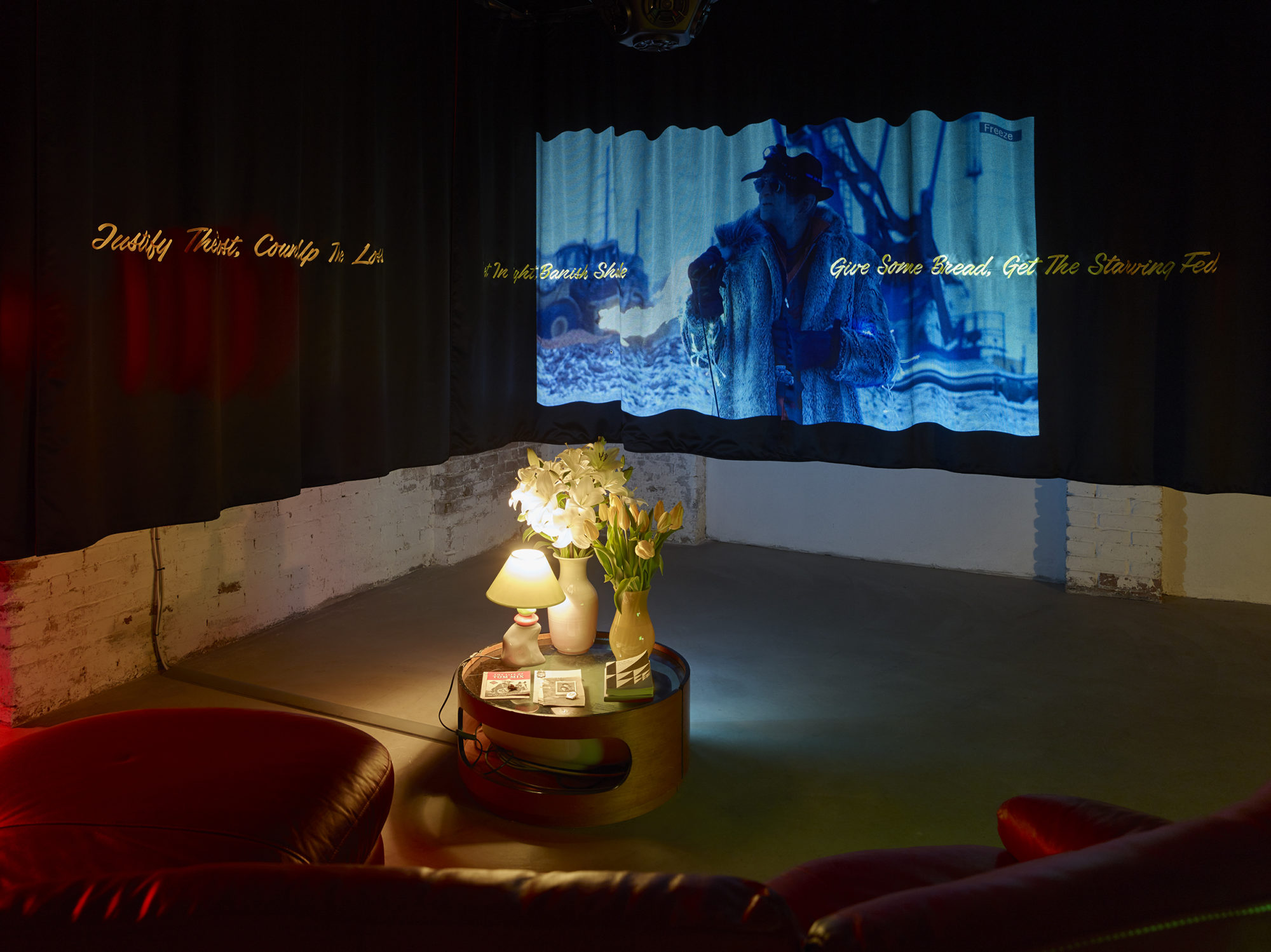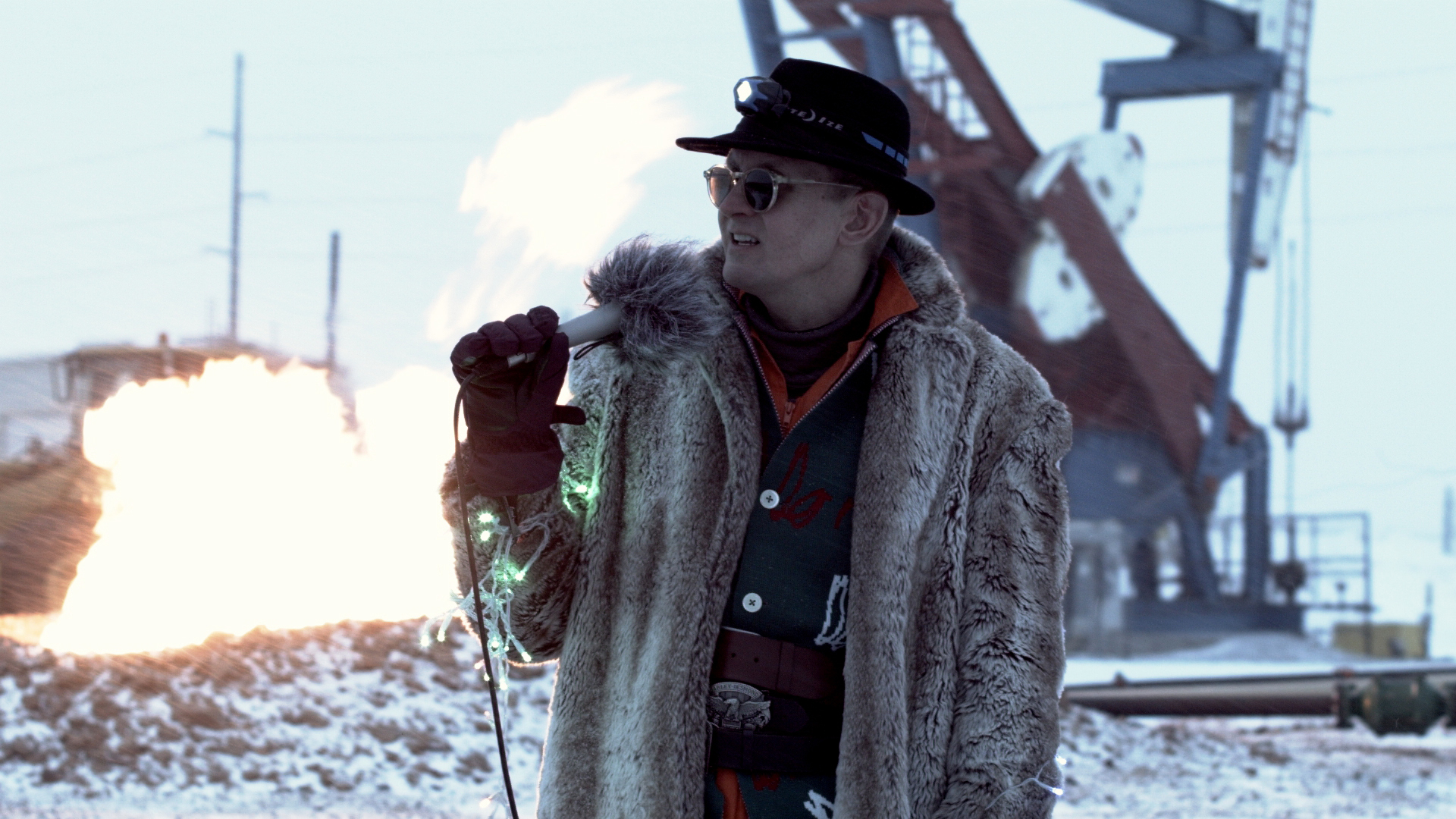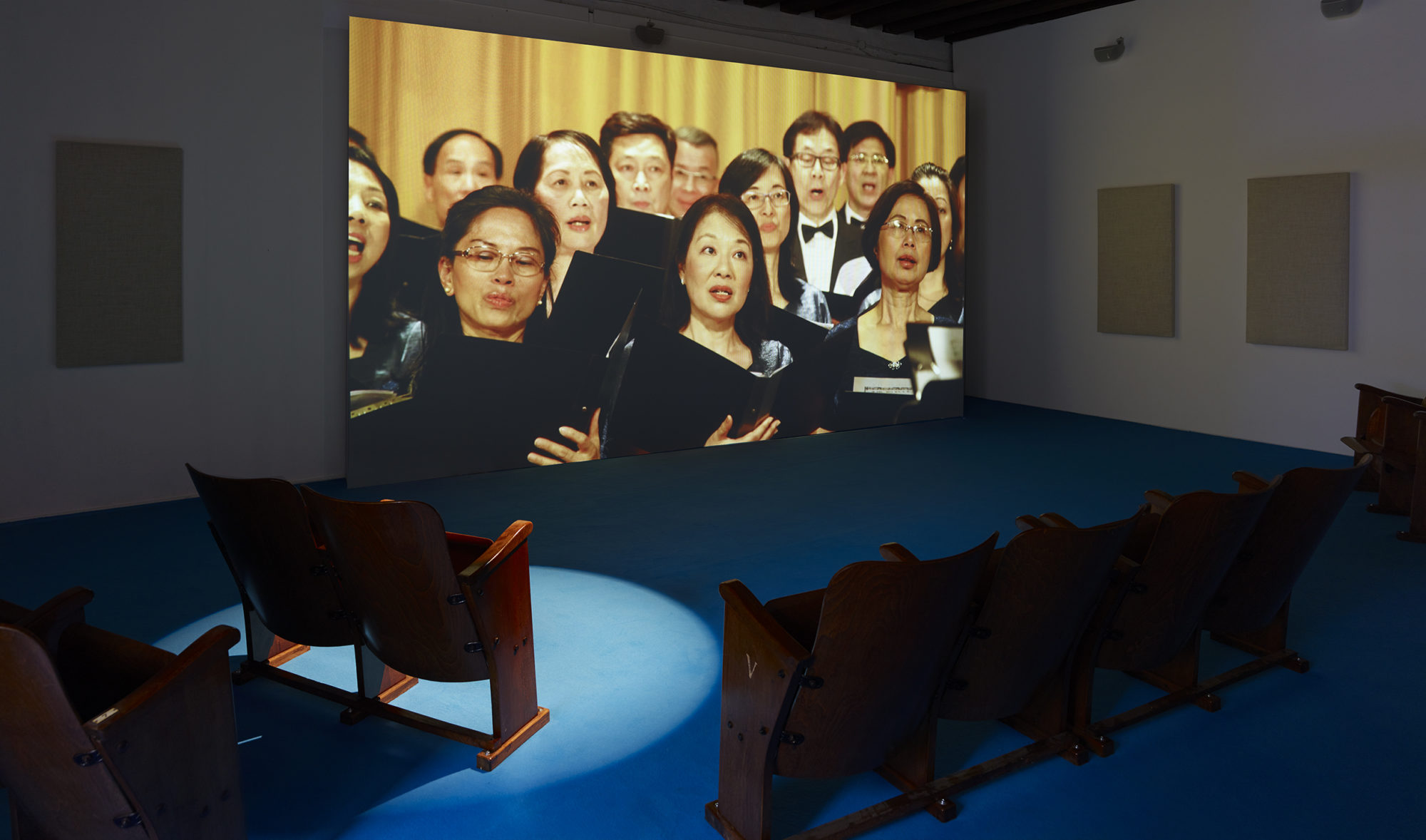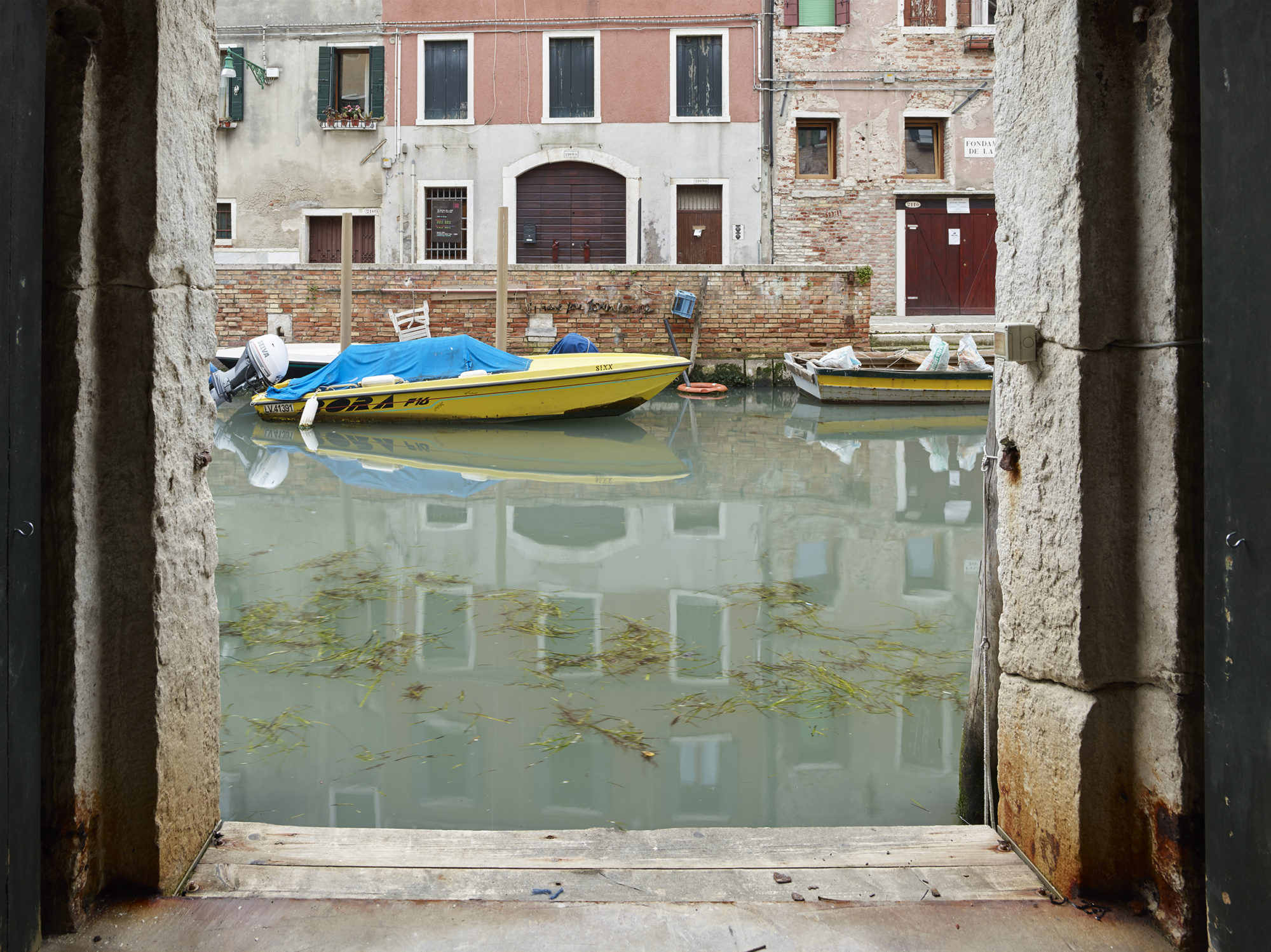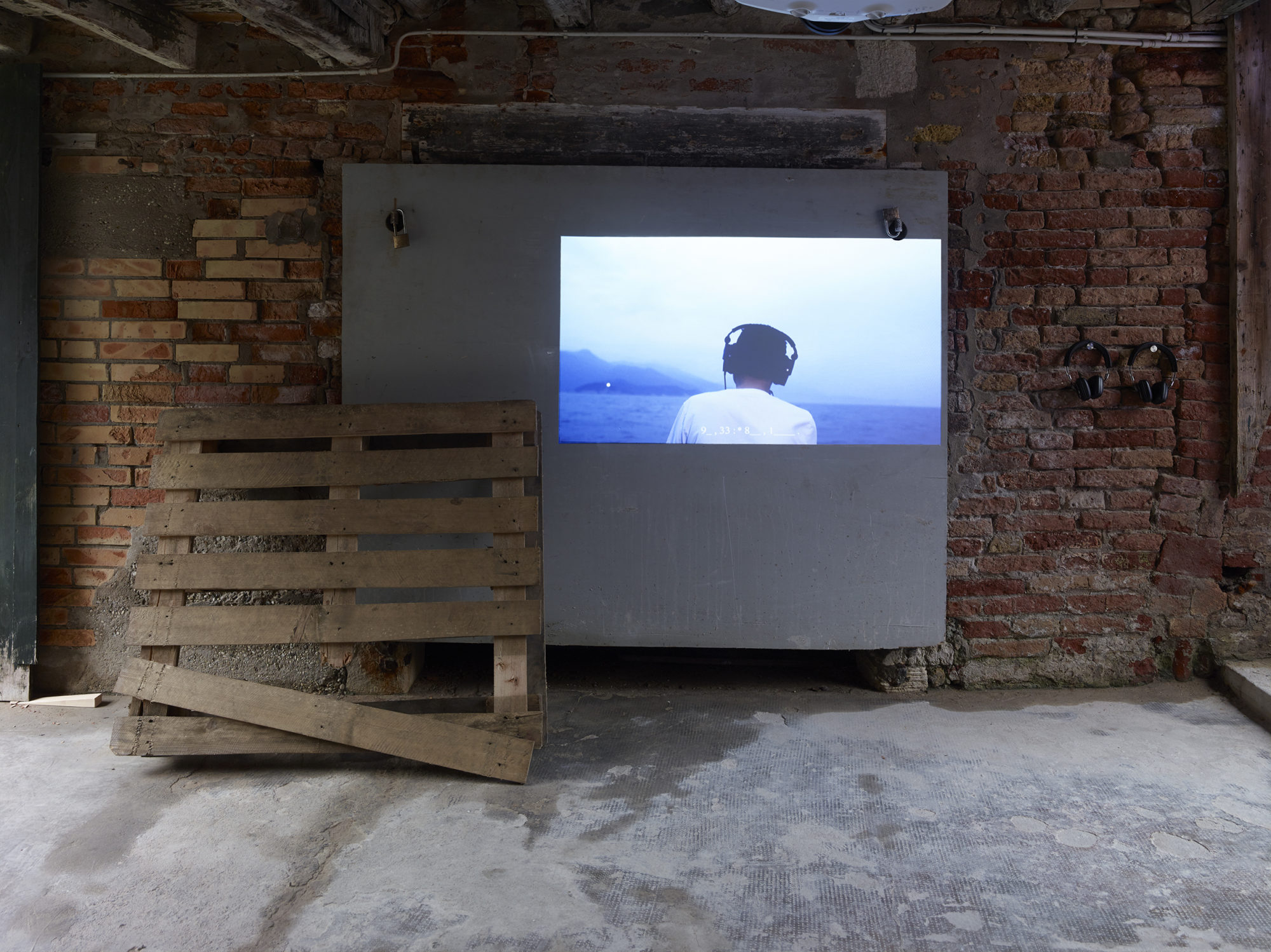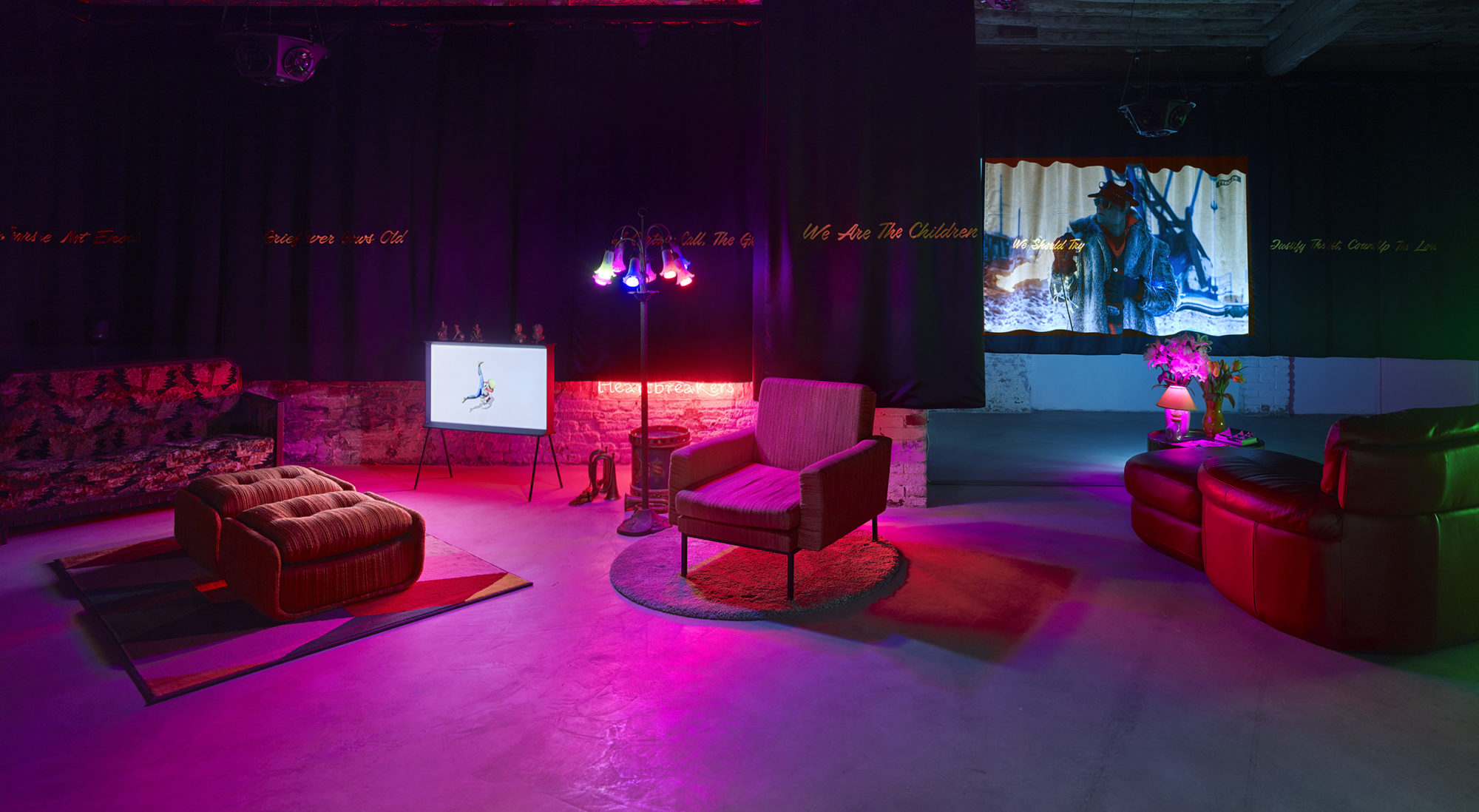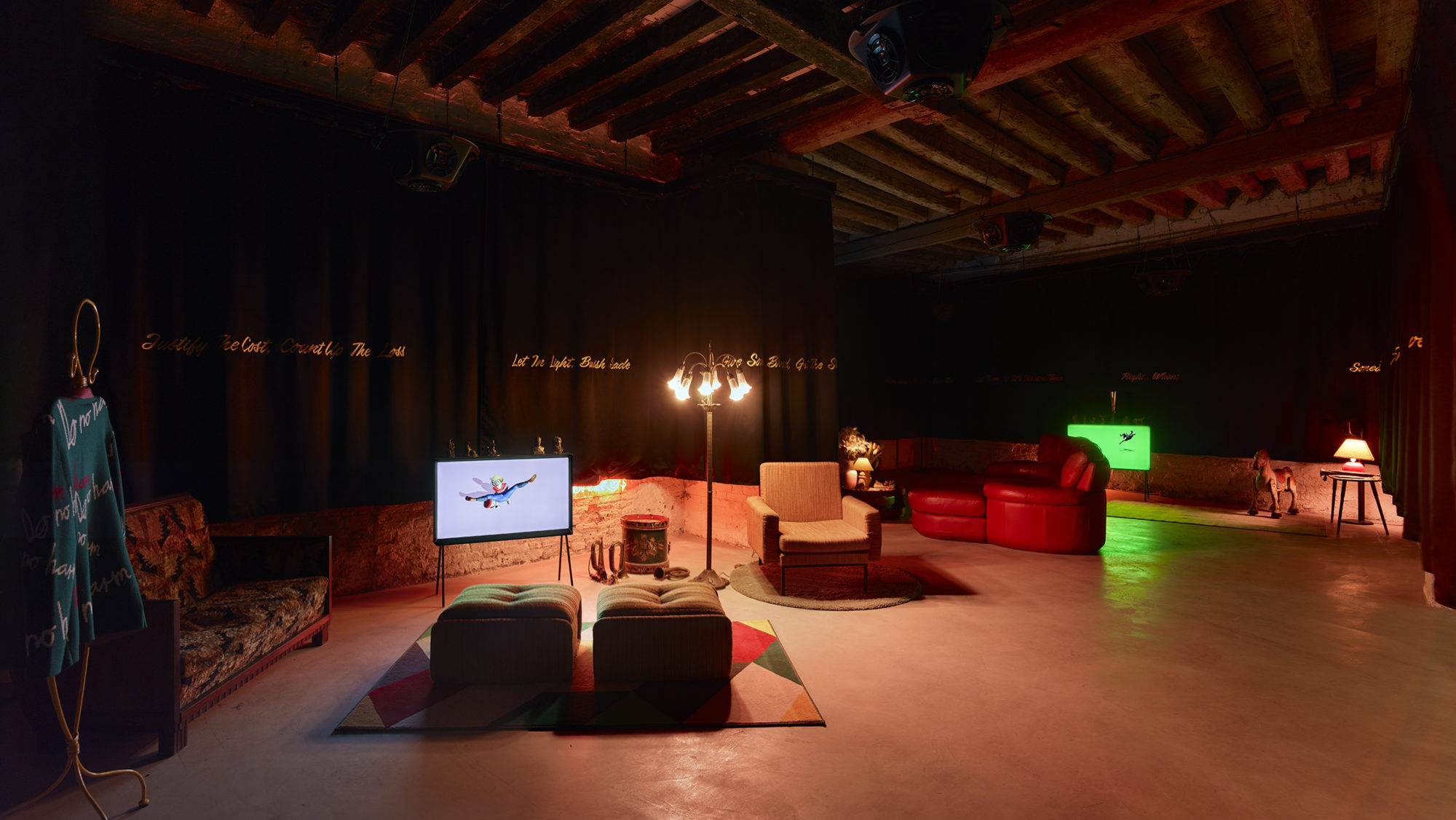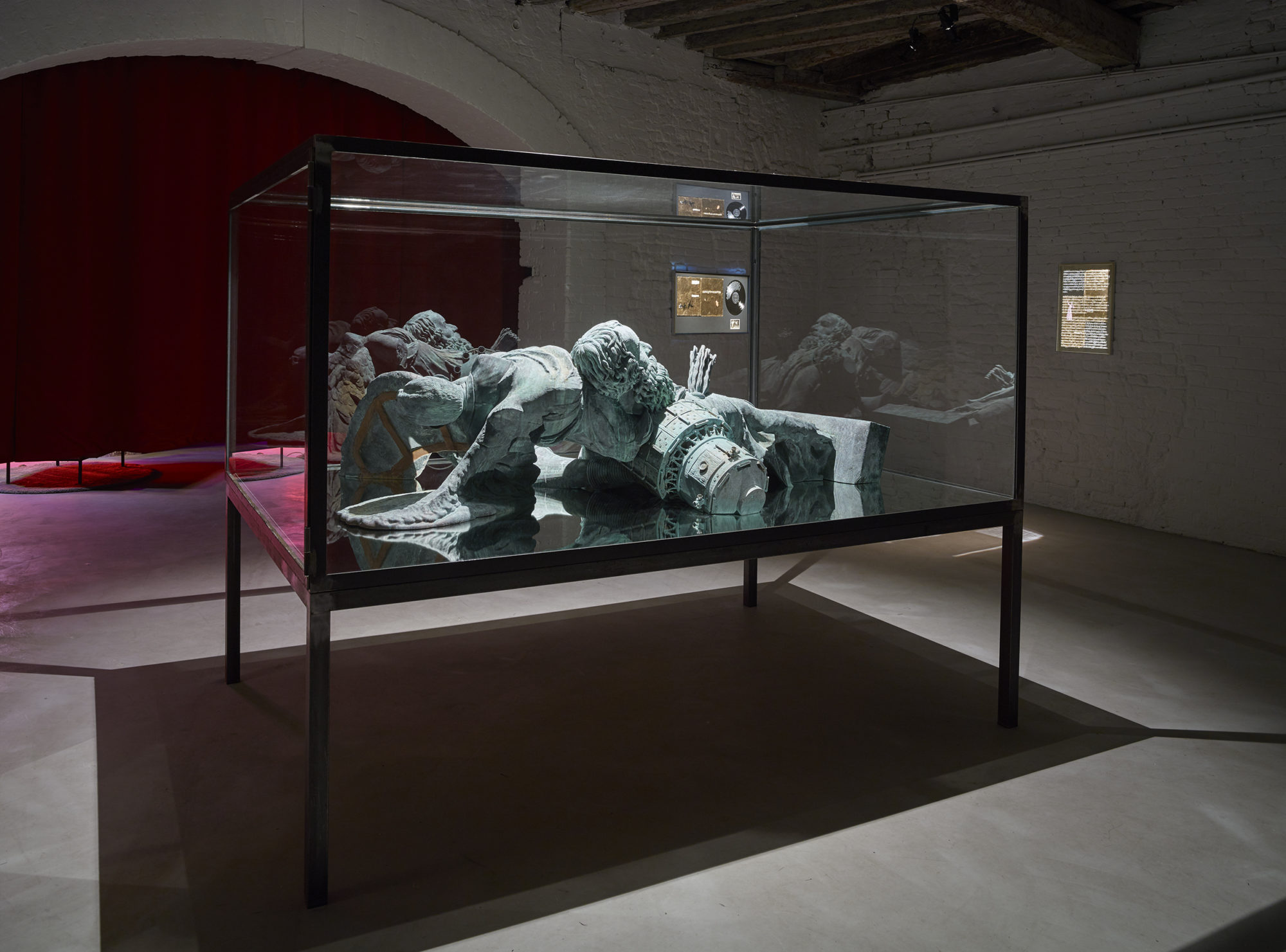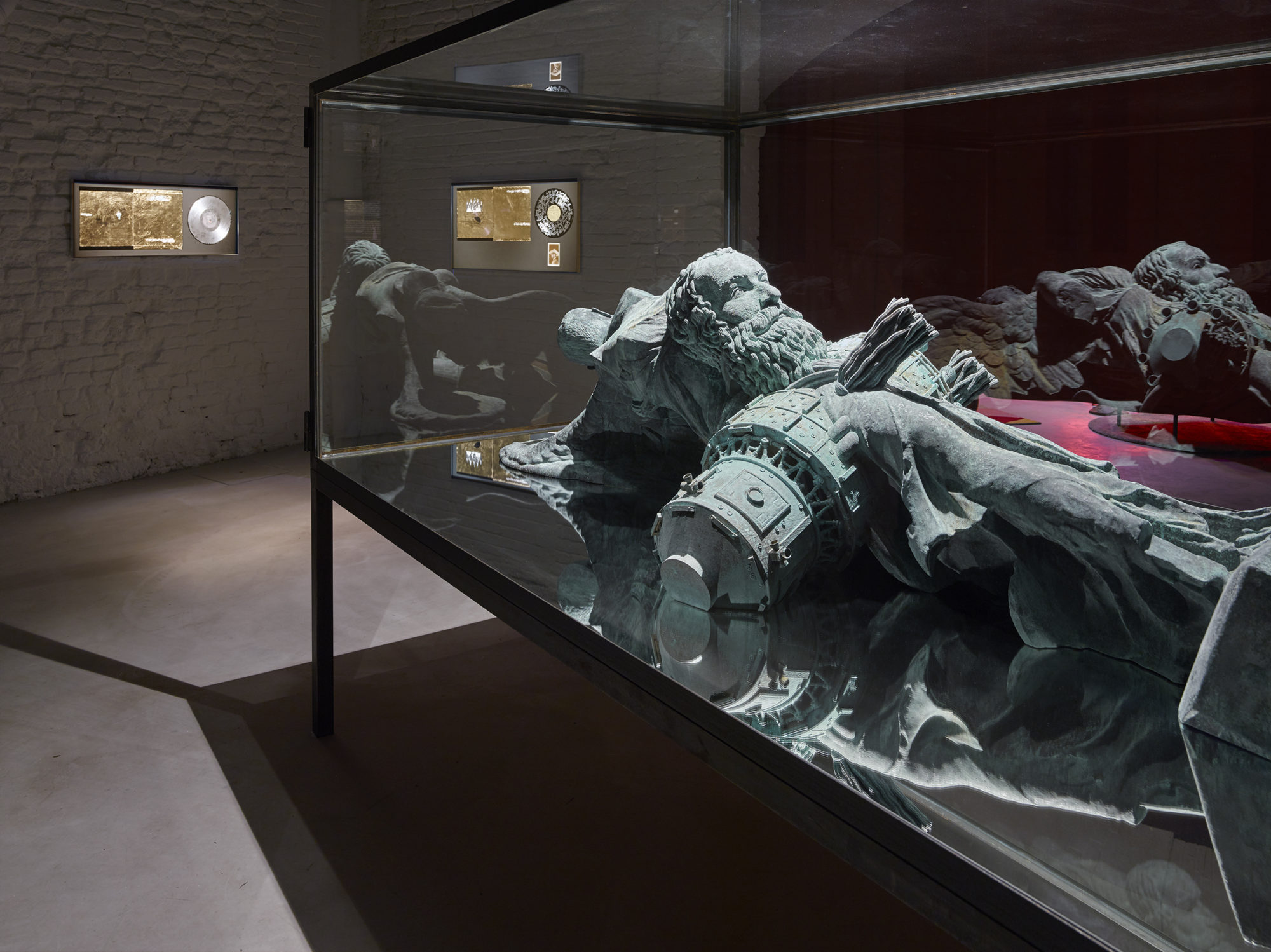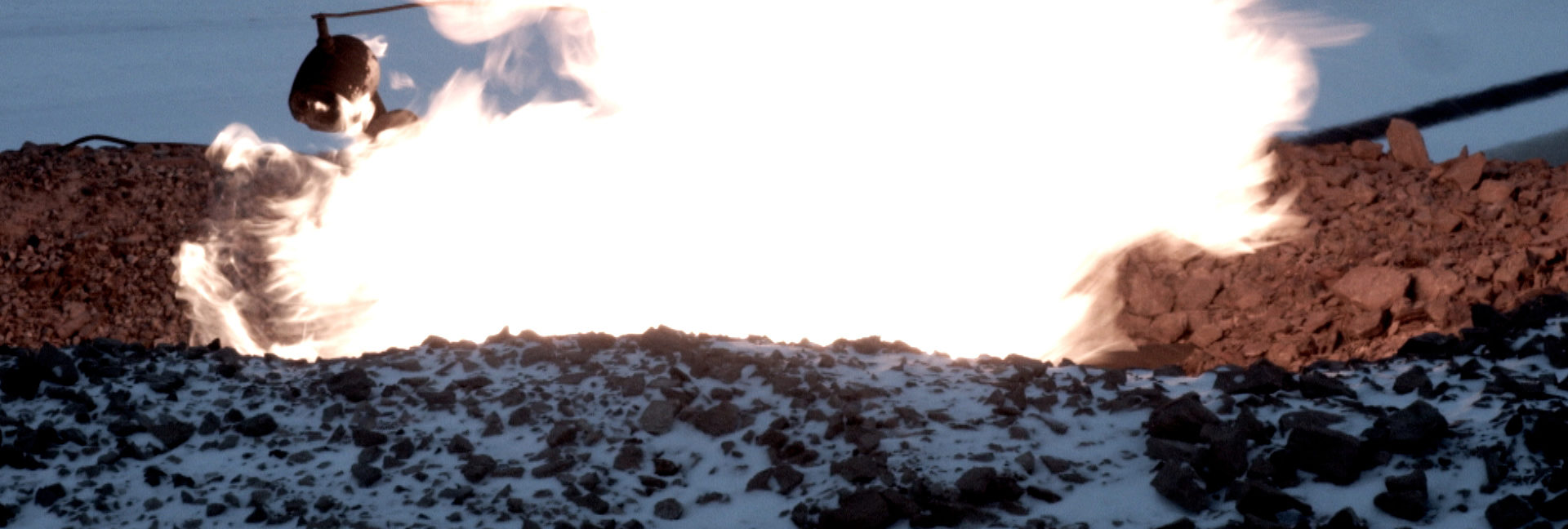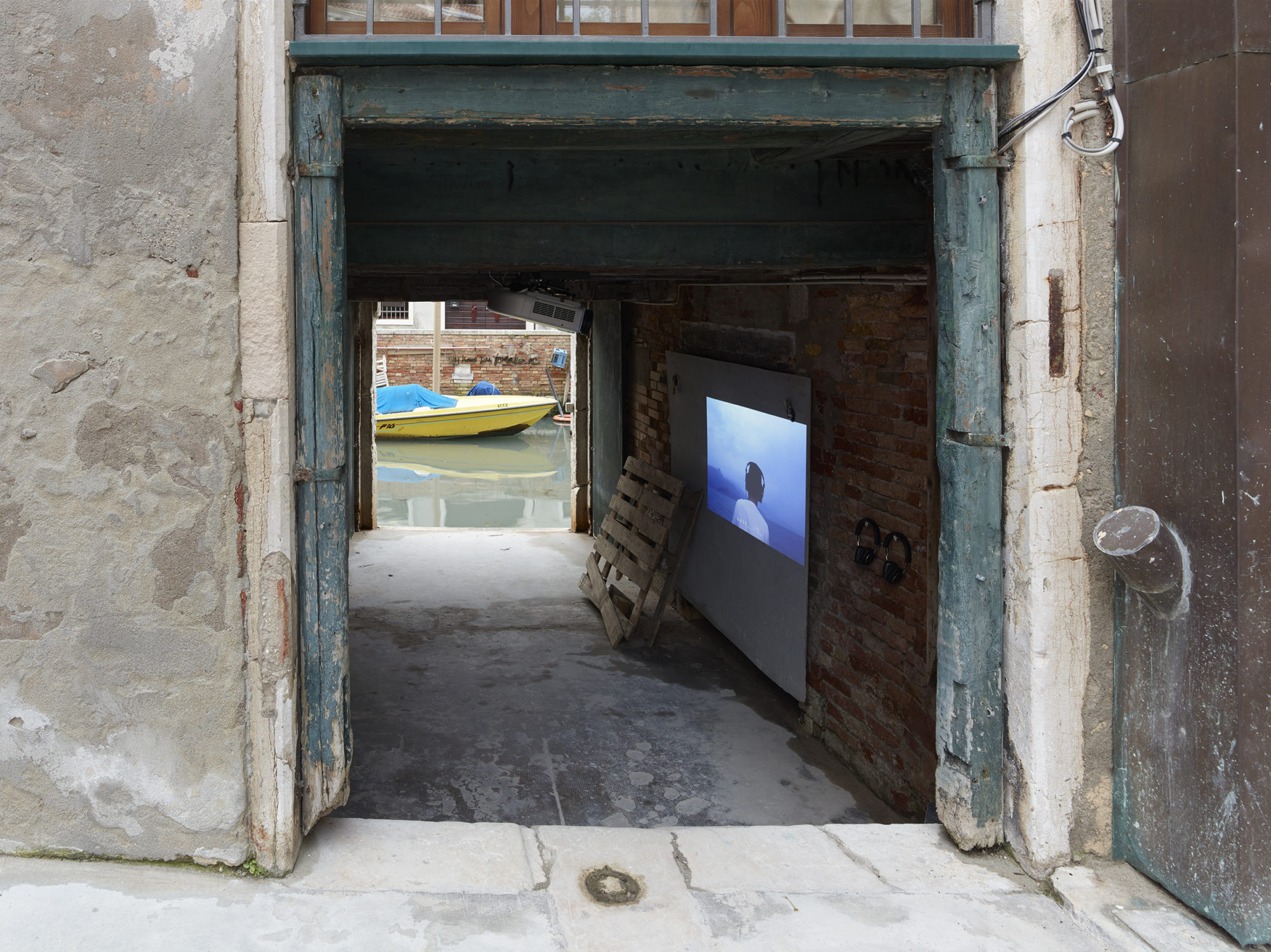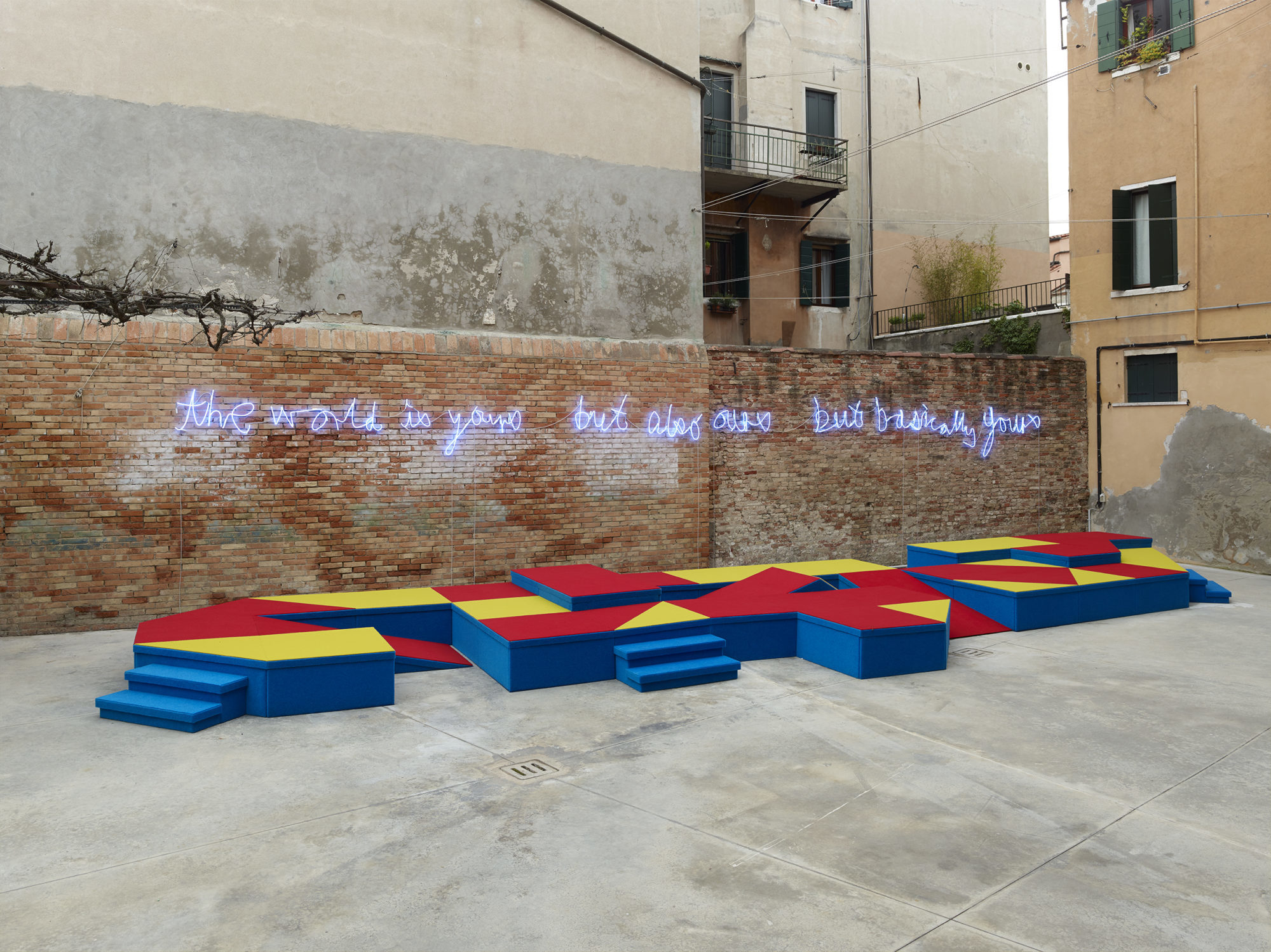
Samson Young, “Palazzo Gundane (homage to the myth-maker who fell to earth,” 2017, video stills [courtesy of the artist]
Samson Young:
Songs For Disaster Relief
Share:
I first met Samson Young during the fall of 2016 in a nondescript coffee shop in Manhattan’s Chinatown, where we talked about his practice and its relation to history, culture, and politics. Young is a sound artist and musician from Hong Kong, a small territory defined simultaneously by a colonized past and a politically uncertain future. The city is an anomaly in that it appears to be indelibly suspended: between its past jurisdiction by the British and its current role as an administrative region of Mainland China; between autonomy and subjugation; and perhaps most significantly between being Chinese but also distinctly Cantonese, Hong Kong-ese, and international. It is equal parts compacted clusters of towering skyscrapers and lush landscapes of uninhabited green hills.
Young’s work harnesses the tension contained within such contradictions. Its quiescent passages have a curious way of amplifying latent messages. Although impassioned, the artist adopts an ostensibly impartial approach that implicates current sociopolitical climates—both local and global—not by channeling discontent, but rather by excavating history and culture. His performances and installations shed light on the breadth of Young’s knowledge, experience, and research, referencing subjects that encompass findings from oral history archives, Bach’s Baroque comic opera Coffee Cantata (1732-1735), Cantonese nursery rhymes, and acoustic weapons often used by the police, among many other acoustic artifacts and phenomena.
Young is an artist who combines a formal training in avant-garde musical composition with a penchant for creating parallel universes that straddle reality and fiction. His practice is ultimately grounded by a clear devotion to sounds, and it alludes to pivotal moments within our collective world memory by re-creating and re-imagining dissonant noises. Following exhibitions, performances, and commissions at such venues as Kunsthalle Düsseldorf, Frieze Projects, London, and Art Basel Hong Kong, Young has created an immersive experience titled Songs for Disaster Relief for the Hong Kong Pavilion of this year’s 57th International Art Exhibition of La Biennale di Venezia. Months after our first conversation, we reconvened to discuss synesthesia, Young’s own creative process, and the charity jingles that motivated his installation.
Samson Young, “Palazzo Gundane (homage to the myth-maker who fell to earth), 2017, installation view, silk-screen print and felt tip pen on vinyl, 3D-printed nylon, vitrine of found objects, movable curtain system, neon, video, animation, and 10-channel sound installation [photo: Simon Vogel; all images courtesy of the artist]
Vivian Chui: When we … met in New York last year, you were hesitant to speak about your work for the Venice Biennale. Now that it’s open, can you speak about it in retrospect?
Samson Young: … The show is titled Songs for Disaster Relief, and it has to do with the genre of charity jingles in the 1980s. I guess we still make them now, but these songs were the most popular then. To put it very simply, I wanted to look at charity jingles as … a historic moment in time, like an event in time in the sense that Zizek talks about it: there is something that has happened, and then everything kind of changes, [making that event] a defining moment. I think that charity jingles are really interesting to think about and to look at, at this moment in time. The original impulse came from a music video that I saw, which was a 2010 remake of “We Are the World” (1985). It was done in a very similar style as the original, featuring staggering solos by a super group of artists. I remember thinking that it was very weird.
VC: What made it seem weird to you?
SY: There was something that was very untimely and insensitive about it. In the 1980s we were already aware of being politically correct and being sensitive to how you project certain aspirations. So when you watch the video, it seems very presumptuous, even a little imperialistic. The same goes for another iconic charity jingle, which is “Do They Know It’s Christmas?” (1984)—it is super messed up, if you think about the lyrics. However, I’m not interested in presenting a straight critique of these songs, and then just deconstructing them. …
I think we could call them out and say that they are problematic, but the point is actually that I wanted to look at these songs with a little more tenderness, let’s say. Like, okay, we are aware of the fact that the lyrics and the aspirations behind them are problematic, but where do we go from there, once that has been settled? I mean, those songs are by people who were genuinely trying to do some good, right? They were trying to do something positive in a way that they knew how. I’m trying to reconcile these two sentiments.
Samson Young, “Palazzo Gundane (homage to the myth-maker who fell to earth,” 2017, video stills [courtesy of the artist]
“We are aware of the fact that the lyrics and the aspirations behind them are problematic, but where do we go from there, once that has been settled?
-Samson Young
VC: How does this sentiment relate to what you mentioned before, about the songs marking a historic moment?
SY: When I said that I am interested in them as a historic event, I was referring to the fact that if you look at that moment in time in the 1980s, the songs coincided with the spread of neoliberalism, of the consolidation of power, of people like Margaret Thatcher, Ronald Reagan, and Deng Xiaoping—and also [with] the rise of the global popular music industry. Big record labels started setting up offices everywhere, such as in Hong Kong. Things are very different now. I guess, as in many of my projects, I am not coming into this with a singular insight or position. The fact that I am making a work about these songs probably means that I don’t fully understand them yet, and am trying to process them. [In Songs for Disaster Relief], I’m actually taking the “Coffee Cantata” sort of approach, where I invent fictional characters and scenarios that make sense of the songs. After … my site visit in Venice, we flew to North Dakota to shoot an MTV video that is like a weird choral version of “We Are the World.”
VC: Why North Dakota?
SY: It has to do with this backstory that I have invented. In my research, I came across this news story about a South African unemployed musician named Boomtoom Gundane. He apparently gathered a bunch of other unemployed musicians to make a cover version of “Do They Know It’s Christmas?” and titled it “Yes we do.” They raised money with that record to donate to a contraception program in the UK, which I thought was really hilarious. I started digging, asking my musician friends from Cape Town and elsewhere whether they knew this person. I assumed that somebody who had made a record like that would probably be famous by now. It wasn’t until a couple of months into this particular line of research that I started to realize that this was not real. This was actually a piece of fake news that was made up by a South African parody website back in 2011, but made it around the internet a couple of times. By the time that I got to it on the website that I saw it on, it was presented to me as though it actually did happen. And I thought that was really interesting.
Samson Young, “We are the World, as performed by the Hong Kong Federatio of the Trade Unions Choir,” 2017, video and multi-channel sound installation [photo: Simon Vogel; image courtesy of the artist]
VC: Given what has been happening in the United States and across the globe, that is an odd yet timely coincidence.
SY: I just took that story to the extreme logical conclusion and actually invented a whole world surrounding this fictional character …. Not to give [away] every detail, but in this fictional world, the character is a crazy person who made the song but lied about where he made it. He is actually an oil field worker from Williston, North Dakota—an area with a lot of oil—and I created a whole story about where he lives, how he lives, what he likes, and so forth. … I [flew] there with a musician who I work with all of the time—a jazz singer who also appeared in The Coffee Cantata (Institute of Fictional Ethnomusicology) (2015). It [was,] like, minus 10 degrees in North Dakota … and the oil field is on private land with dirt roads.
VC: Make sure your phones are charged with GPS! To backtrack a little bit there was a neon phrase that appeared in your 2014 performance, Stanley. It read, “NOTHING WE DID COULD HAVE SAVED HONG KONG IT WAS ALL WASTED.” That was the year that the Umbrella Movement erupted, so I’ve always found it curious seeing as, from our conversations, you are often hesitant to make polemical statements. Was that an expression of your thoughts on what had (and has) been happening in Hong Kong?
SY: [The phrase] came from my research for Stanley. It was actually a poem from this auxiliary nurse named Day Joyce, who was held captive in the Stanley Internment Camp during WWII. I found a recording of her talking about her experience in the Imperial War Museum Sound Archives, which conducted an oral history project in, I think, the late 1980s and recorded interviews with these subjects before they passed away. During the war, the government of Hong Kong wrote to Churchill for consideration of an open city policy when the Japanese’s arrival appeared imminent. The letter argued that the city was indefensible due to its small land mass, but Churchill insisted that it was a matter of national pride. Day Joyce talked about that, and she felt basically that Churchill’s decision wasted many lives. When I heard that recording, I initially felt really angry. But then I also thought, with the hindsight of history, she was not wrong. Anyways, the whole project was not a comment on what was happening in Hong Kong at the time that the piece was made, though it obviously took on a different meaning after the Umbrella Movement. To answer your question, a lot of the texts that I use often have an origin in [current] affairs, a specific piece of research. They are almost never things that I make up myself; they are always quotes or pulled from some historic document. In the case of the To Fanon series, more people would call the texts “performative utterances.” I guess it is all very consistent with the approach that I take with other elements in my work, which is a little bit of a juxtaposition—a collage of different things which are related in my mind, an expanded mind map. Not a direct creation on my part, do you know what I mean?
Samson Young, Palazzo Gundane (homage to the myth-maker who fell to earth), 2017, installation detail [photo: Simon Vogel; courtesy of the artist]
VC: Definitely. Speaking of mind maps, I once read a statement by you, [wherein] you said that you associate certain noises with particular colors that are subjective to the imagination. Do these associations happen constantly, or are they specific to certain moments, for instance when you are sitting before a piece of drawing paper? Do these colors change over time?
SY: First of all, I think that there is a level of consistency within each series. For example, the drawings from my bell recording journey or bird song series tend to have a yellow and orange hue to them. And then, when I went on the container ship residency, the system was different. There is a level of consistency within each series. I think that this idea of hearing colors associated with certain temporal qualities, or keys even, is not so uncommon. A lot of musicians talk about that, and there are people who have actual physical conditions of seeing colors when they hear some sounds—Messiaen, for example, had it. I don’t have the condition myself, but I have that imagination that is common to musicians. When you practice, say, the C major scale or the D major scale, musicians tend to imagine them in certain hues—and also give pretty consistent answers, though we differ in our responses. However, I think maybe what you are trying to get at is how reversible that is, how much of that is sort of personal idiosyncrasy. When I do sound transcriptions, I am not interested in them being verifiable or reversible; I’m not creating them to be read as a score for performances to be realized. There is a difference between being careful and systemic with the process, versus making claims of objectivity. So, seeing sounds can be methodological, but you don’t have to say that this is scientific.
VC: I feel like that line of thinking is almost holistic in your approach to art making, in that it’s all very much based on subjectivity rather than on making concrete statements.
SY: I don’t know if I’m avoiding making concrete statements, but, again, I only make works about things that I feel like I need to process. It’s not about presenting a singular insight, or persuading opinion one way or another. This is not to say that I’m not political. After I’ve done the processing, I form my opinion about certain things; I might have more clarity, or I might be more confused. That might not be immediately reflected in the way that the work is consumed, but it affects how I vote, how I run my nonprofit, who I decide to work with, who I decide not work with. I’m not trying to make propaganda.
Samson Young, Lullaby (World Music), 2017, video, soundtrack and stainless steel [photo: Simon Vogel; courtesy of the artist]
Samson Young, Lullaby (World Music), 2017, video, soundtrack and stainless steel [photo: Simon Vogel; courtesy of the artist]
VC: I didn’t realize that you ran a nonprofit.
SY: I run a nonprofit called Contemporary Musiking Hong Kong. It’s a small sound art group that is funded by the Hong Kong Arts Development Council. I’m very low-key about it. We do an exchange project and run professional development workshops for sound artists.
VC: This is just something that I’ve been very curious about, as someone born in but also a bit removed from Hong Kong. I was wondering whether, in your mind, people perceive and process your work differently within Hong Kong versus within international contexts like the [Venice] Biennale. I ask this because sound art is still one of the newer mediums across the contemporary art field; oftentimes it isn’t as immediately tangible or digestible as, say, a painting or drawing.
SY: … I haven’t really thought about that. I can only say that musicians have always played a role in contemporary art contexts—musicians doing things in the art world is certainly not something new. What is new, however, is a body of discourse that we call sound studies or sound art studies. There is a new way to look at these types of works. I think before, if you even look at the composers who were associated with Fluxus, for example, a lot of the work that they have done was discussed in the context of performance art. But now there is a new way to talk about musicians doing things in the contemporary art context that is more focused on these kinds of theories. Not so much on just the performative aspects, and so maybe that is new. But in terms of musicians crossing outside the world of music, doing other stuff—that has been around for quite some time.
Samson Young, “Palazzo Gundane (homage to the myth-maker who fell to earth), 2017, installation view, silk-screen print and felt tip pen on vinyl, 3D-printed nylon, vitrine of found objects, movable curtain system, neon, video, animation, and 10-channel sound installation [photo: Simon Vogel; all images courtesy of the artist]
Vivian Chui is a Brooklyn-based emerging curator from Los Angeles and Hong Kong. She is currently on staff at Pioneer Works, a nonprofit cultural center in Red Hook, Brooklyn.
